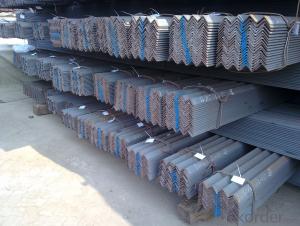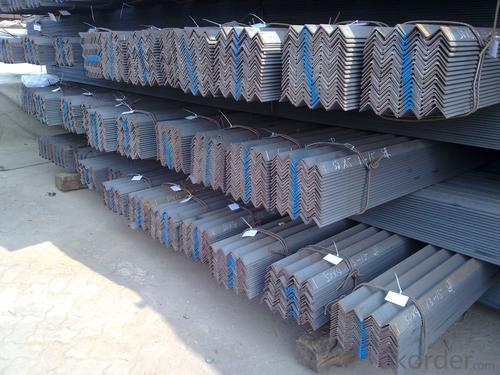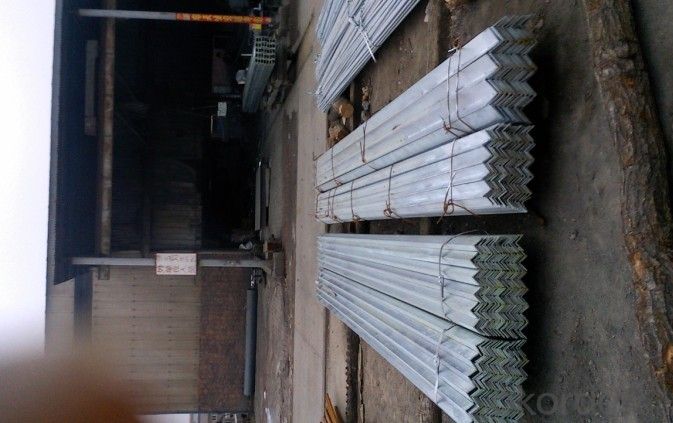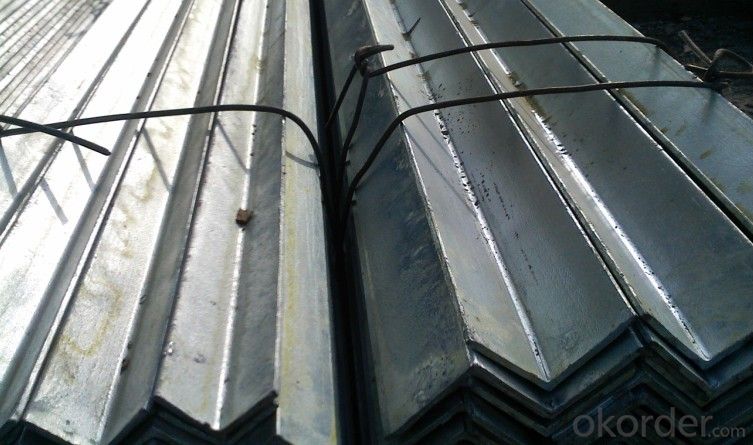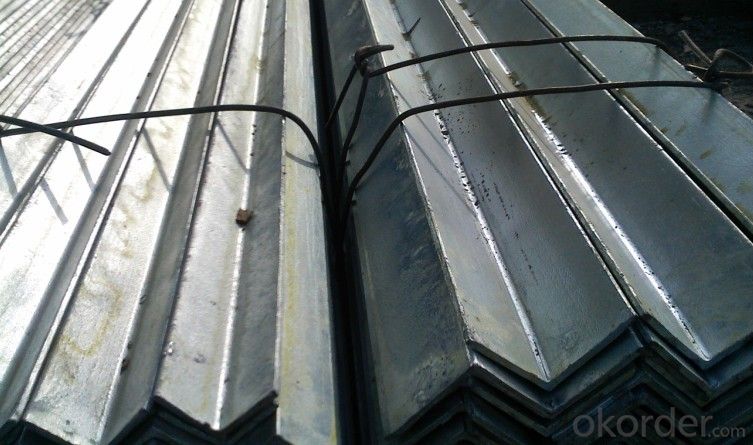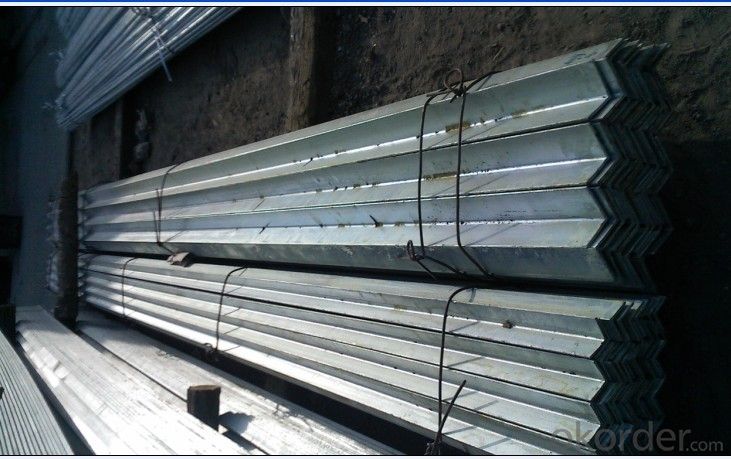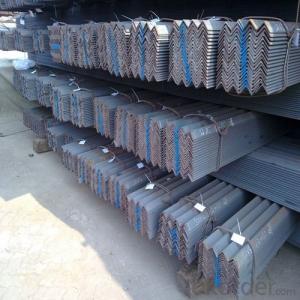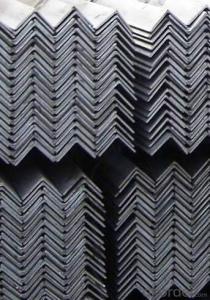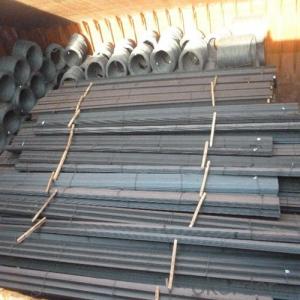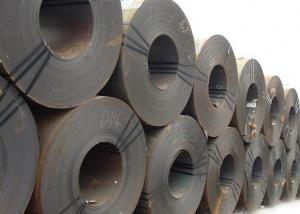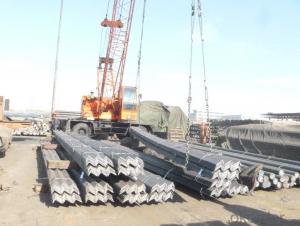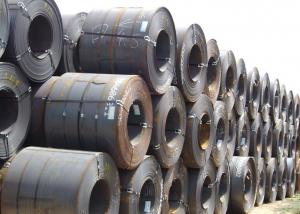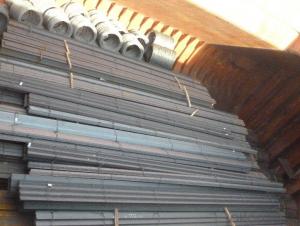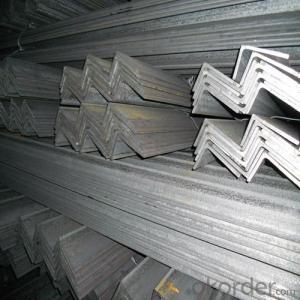hot rolled angle steel JIS 50MM*50MM 6M
- Loading Port:
- Qingdao
- Payment Terms:
- TT OR LC
- Min Order Qty:
- 50 m.t.
- Supply Capability:
- 10000 m.t./month
OKorder Service Pledge
OKorder Financial Service
You Might Also Like
Product Description:
Specifications of Angle Steel
1. Invoicing on theoretical weight or actual weight as customer request
2. Length: 6m, 9m, 12m as following table
3. Sizes
Sizes: 25mm-250mm | ||
a*t | ||
25*2.5-4.0 | 70*6.0-9.0 | 130*9.0-15 |
30*2.5-6.6 | 75*6.0-9.0 | 140*10-14 |
36*3.0-5.0 | 80*5.0-10 | 150*10-20 |
38*2.3-6.0 | 90*7.0-10 | 160*10-16 |
40*3.0-5.0 | 100*6.0-12 | 175*12-15 |
45*4.0-6.0 | 110*8.0-10 | 180*12-18 |
50*4.0-6.0 | 120*6.0-15 | 200*14-25 |
60*4.0-8.0 | 125*8.0-14 | 250*25 |
5. Payment terms:
1).100% irrevocable L/C at sight.
2).30% T/T prepaid and the balance against the copy of B/L.
3).30% T/T prepaid and the balance against L/C
6.Material details:
Alloy No | Grade | Element (%) | |||||
C | Mn | S | P | Si | |||
|
|
|
|
|
|
| |
Q235 | B | 0.12—0.20 | 0.3—0.7 | ≤0.045 | ≤0.045 | ≤0.3 | |
|
|
|
|
|
|
| |
Alloy No | Grade | Yielding strength point( Mpa) | |||||
Thickness (mm) | |||||||
≤16 | >16--40 | >40--60 | >60--100 | ||||
≥ | |||||||
|
|
|
|
|
| ||
Q235 | B | 235 | 225 | 215 | 205 | ||
Alloy No | Grade | Tensile strength (Mpa) | Elongation after fracture (%) | ||||
Thickness (mm) | |||||||
| ≤16 | >16--40 | >40--60 | >60--100 | |||
≥ | |||||||
|
|
|
|
|
|
| |
Q235 | B | 375--500 | 26 | 25 | 24 | 23 | |
Usage & Applications of Angle Steel
According to the needs of different structures, Angle can compose to different force support component, and also can be the connections between components. It is widely used in various building structures and engineering structures such as roof beams, bridges, transmission towers, hoisting machinery and transport machinery, ships, industrial furnaces, reaction tower, container frame and warehouse etc.
Packaging & Delivery of Angle Steel
1. Packing: it is nude packed in bundles by steel wire rod
2. Bundle weight: not more than 3.5MT for bulk vessel; less than 3 MT for container load
3. Marks:
Color marking: There will be color marking on both end of the bundle for the cargo delivered by bulk vessel. That makes it easily to distinguish at the destination port.
Tag mark: there will be tag mark tied up on the bundles. The information usually including supplier logo and name, product name, made in China, shipping marks and other information request by the customer.
If loading by container the marking is not needed, but we will prepare it as customer request.
Production flow of Angle Steel
Material prepare (billet) —heat up—rough rolling—precision rolling—cooling—packing—storage and transportation
- Q: How do steel angles compare to other structural materials?
- Steel angles are highly versatile and widely used in construction due to their strength, durability, and cost-effectiveness. Compared to other structural materials like wood or concrete, steel angles offer superior strength-to-weight ratio, allowing for lighter structural components without compromising structural integrity. Additionally, steel angles are resistant to fire, pests, and moisture, making them ideal for long-lasting and low-maintenance structures. Overall, steel angles are a reliable and efficient choice for various structural applications.
- Q: How do steel angles perform under vibration or resonance conditions?
- Steel angles are widely recognized for their exceptional structural properties, specifically their ability to endure vibrations and resonance circumstances. In the presence of vibrations, steel angles demonstrate impressive stiffness and damping characteristics, allowing them to proficiently dissipate the energy generated by these vibrations. This behavior is a result of the inherent material properties of steel, including its substantial strength and rigidity. Additionally, steel angles exhibit commendable performance under resonance conditions. Resonance arises when the frequency of external excitation matches the natural frequency of the steel angle. In such instances, the steel angle may encounter amplified vibrations that could potentially lead to structural failure if not adequately addressed. Nevertheless, steel angles are meticulously designed and fabricated with resonance considerations in mind, guaranteeing their capacity to withstand and alleviate the repercussions of resonance. To further enhance the performance of steel angles under vibration or resonance conditions, engineers can employ an array of techniques. These techniques encompass the incorporation of damping materials or devices to absorb or dissipate vibrational energy, the alteration of the geometric properties of the steel angle to modify its natural frequency, and the utilization of vibration isolation systems to minimize the transmission of vibrations to the steel angle. In conclusion, steel angles are exceptionally suitable for applications that require resistance to vibrations or resonance conditions. Their remarkable strength, stiffness, and damping properties enable them to effectively withstand and mitigate the effects of vibrations, thereby ensuring the integrity and stability of the structure in which they are employed.
- Q: What are the different methods of surface painting for steel angles?
- There are several different methods of surface painting for steel angles, each offering unique benefits and considerations. 1. Brushing: This is the most common method of surface painting for steel angles. It involves using a paintbrush to manually apply paint onto the surface. Brushing allows for good control and precision, making it ideal for smaller projects or touch-ups. However, it may not be as efficient for large-scale applications. 2. Spraying: Spraying is a popular method for painting steel angles, especially when a large area needs to be covered quickly. It involves using a paint spray gun or aerosol canister to evenly distribute paint onto the surface. Spraying allows for a smooth and uniform finish, but it requires appropriate safety precautions, such as wearing a mask and ensuring proper ventilation. 3. Dipping: Dipping involves immersing the steel angles in a tank or container filled with paint. This method ensures complete coverage and is often used for high-volume production processes. However, it may not be suitable for complex shapes or angles with intricate designs, as the excess paint may drip or accumulate unevenly. 4. Electrostatic painting: Electrostatic painting is a method that involves charging the paint particles and applying them to a grounded steel angle. This creates an electromagnetic attraction, resulting in a more even and efficient coverage. Electrostatic painting is commonly used in industrial settings and can help reduce paint waste and overspray. 5. Powder coating: Powder coating is a dry finishing process that involves applying a fine powder onto the steel angle's surface. The powder is then heated and fused onto the metal, creating a durable and attractive finish. Powder coating provides excellent corrosion resistance and can be done in a variety of colors and textures. However, it requires specialized equipment and may not be suitable for small-scale or on-site applications. When selecting a method of surface painting for steel angles, it is important to consider factors such as the size and complexity of the project, desired finish quality, environmental conditions, and available resources. Consulting with a professional painter or coating specialist can help determine the most suitable method for a specific application.
- Q: Can steel angles be used for framing purposes?
- Yes, steel angles can be used for framing purposes. Steel angles are commonly used in construction and engineering to provide structural support and stability. They are often used to create frames for buildings, bridges, and other structures. Steel angles can be easily welded or bolted together to form a strong and rigid frame. They are versatile and can be used in various framing applications, such as supporting walls, beams, and roofs. Additionally, steel angles are durable and have high strength-to-weight ratio, making them ideal for framing purposes.
- Q: Can steel angles be used in the construction of industrial chimneys?
- Steel angles are indeed applicable in the construction of industrial chimneys. Their strength, durability, and versatility make them a popular choice for various construction projects. When it comes to industrial chimneys, steel angles provide the necessary support and stability. They can be integrated into the design to reinforce the framework, especially at the corners and joints where extra strength is needed. Moreover, steel angles can be utilized to establish a solid base or foundation, ensuring stability and preventing any potential structural problems. In summary, steel angles are well-suited for building industrial chimneys due to their ability to withstand the extreme temperatures and harsh conditions associated with chimney operation.
- Q: Can steel angles be used for shelving?
- Yes, steel angles can be used for shelving. Steel angles are commonly used in shelving systems due to their durability and strength. They provide sturdy support for shelves and can withstand heavy loads. Additionally, steel angles are versatile and can be easily customized to fit different shelving configurations. They are often used in industrial settings, warehouses, garages, and even in residential applications where a strong and reliable shelving solution is desired.
- Q: What is the purpose of using steel angles in construction?
- Steel angles serve various purposes in construction. Their primary function is to offer structural support and stability to different components of a building or structure. Reinforcing corners, edges, and joints, these angles enhance the overall strength and rigidity of the structure. Moreover, steel angles play a crucial role in distributing and transferring loads or forces within the construction. They facilitate the even distribution of weight and stress across various parts of the structure, preventing the formation of weak points. Furthermore, steel angles are highly versatile and can be easily customized and fabricated to meet specific construction requirements. They can be cut, drilled, and welded, seamlessly integrating into a wide range of construction projects. Not only that, but steel angles also exhibit remarkable durability and resistance to corrosion, making them suitable for both indoor and outdoor applications. With the ability to withstand heavy loads and extreme weather conditions, they provide long-lasting support to the structure. In conclusion, the utilization of steel angles in construction aims to enhance structural integrity, provide support and stability, distribute loads, and ensure the longevity of the building or structure.
- Q: How do steel angles perform under fatigue or repeated loading conditions?
- Steel angles perform well under fatigue or repeated loading conditions due to their high strength and resistance to deformation. The angled shape of the steel provides enhanced structural integrity and distributes the applied loads efficiently, minimizing stress concentrations and potential failure. Additionally, steel angles are highly durable and have excellent fatigue strength, making them suitable for various applications where repeated loading is expected, such as in construction, bridges, and machinery.
- Q: How do you prevent galvanic corrosion between steel angles and aluminum components?
- To prevent galvanic corrosion between steel angles and aluminum components, there are several measures you can take: 1. Use a barrier: Apply a barrier between the steel and aluminum surfaces, such as a non-conductive coating or a layer of paint. This will create a physical barrier that prevents direct contact between the two metals, reducing the likelihood of galvanic corrosion. 2. Apply insulating tape or gaskets: Place insulating tape or gaskets made of non-conductive materials, such as rubber or plastic, between the steel angles and aluminum components. This acts as a buffer, preventing direct contact and minimizing the risk of galvanic corrosion. 3. Select compatible metals: When designing or choosing components, opt for metals that are more compatible with each other. For instance, using stainless steel or galvanized steel instead of regular steel can reduce the risk of galvanic corrosion when paired with aluminum. 4. Use isolation techniques: Isolate the steel angles and aluminum components using isolation techniques such as plastic or rubber spacers. These spacers separate the metals, preventing direct contact and minimizing the potential for galvanic corrosion. 5. Apply corrosion inhibitors: Apply corrosion inhibitors, such as special coatings or compounds, to the steel and aluminum surfaces. These inhibitors create a protective layer that helps prevent galvanic corrosion. 6. Control the environment: Galvanic corrosion is accelerated in the presence of moisture, saltwater, or acidic environments. Minimize the exposure of steel angles and aluminum components to these corrosive elements by ensuring proper ventilation, drainage, and maintaining appropriate protective coatings. It is important to carefully consider the specific requirements and conditions of your application when choosing the most appropriate method or combination of methods to prevent galvanic corrosion between steel angles and aluminum components. Consulting with corrosion experts or engineers can provide valuable insights and guidance tailored to your specific situation.
- Q: Can steel angles be used in decorative or architectural applications?
- Indeed, decorative or architectural applications can make use of steel angles. With their versatility, steel angles can be manipulated and shaped to form a variety of architectural elements. These elements include decorative trims, ornamental railings, window frames, door frames, and even structural features like support brackets. Furthermore, steel angles can undergo different coatings or finishes to enhance their aesthetic appeal. These enhancements may involve painting, powder coating, or patina finishes. Due to their strength and durability, steel angles are suitable for both indoor and outdoor applications. They provide structural integrity and simultaneously add a visually pleasing element to the design. Overall, steel angles offer a plethora of design possibilities and can be effectively incorporated into decorative or architectural applications.
Send your message to us
hot rolled angle steel JIS 50MM*50MM 6M
- Loading Port:
- Qingdao
- Payment Terms:
- TT OR LC
- Min Order Qty:
- 50 m.t.
- Supply Capability:
- 10000 m.t./month
OKorder Service Pledge
OKorder Financial Service
Similar products
Hot products
Hot Searches
Related keywords
